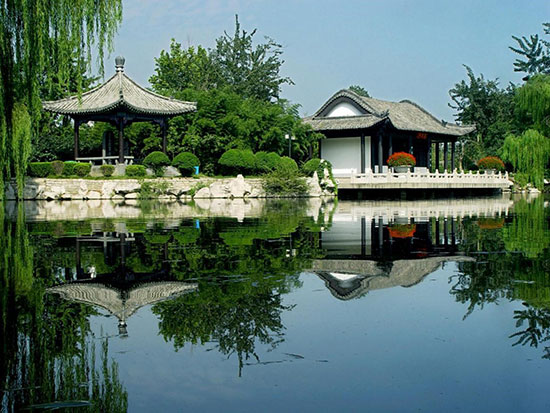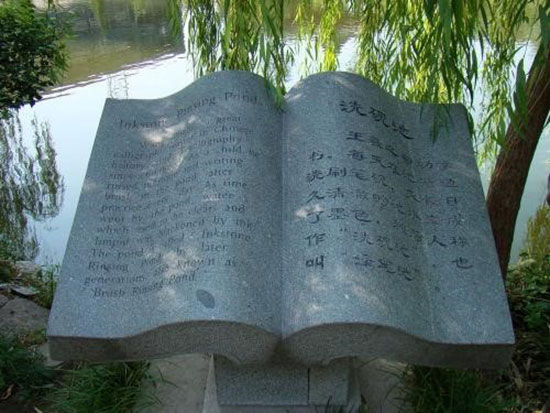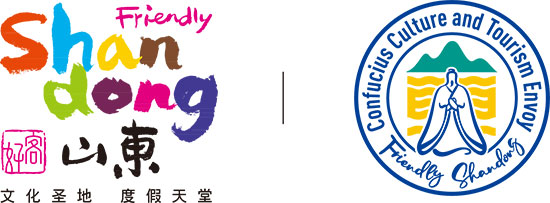成为孔子文化和旅游使者,感受山东文艺魅力
中国书圣王羲之与《兰亭集序》的故事
王羲之是中国古代东晋时期书法家,有“书圣”之称。他改变了汉魏时期汉字书体的朴质书风,开创了妍美劲健的行书书体。他的代表作《兰亭集序》被誉为“天下第一行书”,千百年来被中国历代无数书法家孜孜不倦地释读、临摹。唐太宗李世民倡导王羲之的书风,喜爱搜集、临摹、欣赏王羲之的真迹,曾亲自为《晋书》撰《王羲之传》,经常摹制《兰亭集序》,赐给群臣。
Calligraphy Master Wang Xizhi and the Preface to the Poems Composed at the Orchid Pavilion
Wang Xizhi, a calligraphist who lived during the Eastern Jin dynasty (317 – 420), was known as the “Sage of Calligraphy.” He changed the simple script of the Han and Wei dynasties (which preceded the Jin dynasty) by inventing the semi-cursive script, which is both beautiful and strong in appearance. His most iconic piece of writing, the Preface to the Poems Composed at the Orchid Pavilion, is known as the world’s greatest example of semi-cursive script writing, and it has been studied and used as a model for practice by countless calligraphists ever since. Emperor Taizong of the Tang dynasty (618 – 907) promoted its use, collecting, copying, and enjoying Wang’s original manuscripts. The emperor personally wrote the section “Biography of Wang Xizhi” in the Book of Jin (a record on the Jin dynasty) and frequently made copies of the Preface to give as gifts to his ministers.
关于《兰亭集序》,还留有一段千古传奇故事。中国东晋时期,王羲之邀谢安、孙绰等40多位名士在会稽山阴的兰亭雅集,曲水流觞,饮酒作诗。曲水流觞也称之为曲水宴,名士们列坐溪边,由书僮将盛满酒的羽觞放入溪水中,随风而动,羽觞停在谁的位置,此人就得赋诗一首,倘若是作不出来,就要罚酒。正在众人沉醉酒香之时,有人提议将当日所做之诗汇编成集。王羲之酒意正浓,提笔畅意挥毫,一气呵成,写下了名满天下的《兰亭集序》。
There is another interesting story about the Preface: Wang once invited Xie An, Sun Chuo, and about 40 other well-reputed scholars to the Orchid Pavilion (on Mt. Kuaiji) for a “winding stream gathering.” This was a special gathering of poets by the banks of a stream. A boy was sent upstream to fill cups with rice wine, and the poets were to complete a poem before any of the cups drifted down to them. If a cup reached a poet but he had yet to complete his poem, he had to drink the wine. As everyone was enjoying the intoxication of poetry and spirits, one of the participants suggested combining all the poems written that day into a single volume. Wang, quite drunk at the time, accepted the proposal and immediately wrote the world-famous Preface.


山东临沂是王羲之的故乡,今天游客来到临沂仍可找到中国“书圣”的印记。王羲之故居位于临沂市兰山区,游客可在洗砚池、晒书台、鹅池等遗迹边寻找“书圣”的足迹。
Wang Xizhi was from Linyi, Shandong, where visitors today may still see traces of his life at such sites as Inkstone Rinsing Pond, the Book-drying Platform, and Goose Pool.

亲爱的朋友们!山东是一个历史悠久、山川壮丽、人文荟萃、文明现代的地方,位于中国东部沿海、黄河下游,与韩国、日本隔海相望,地处“一带一路”东端交汇点,曾诞生过孔子、孟子、曾子、子思以及墨子、孙子等一批中国思想文化巨人,GDP位居中国第三,人口超过1亿。
Dear friends, Shandong boasts modernity, magnificent mountains and rivers, time-honored history, and a myriad of talented individuals. It is located on the east coast of China, at the lower reaches of the Yellow River, across the sea from South Korea and Japan, and at the eastern juncture of the Belt and Road. It’s the birthplace of thinkers and contributors to Chinese culture, such as Confucius, Mencius, Zengzi, Zisi, Mozi, and Sunzi. Shandong has the third-highest GDP in China, with a population of over 100 million.
2020年中国山东省要在全球招募2万名“孔子文化和旅游使者”,欢迎大家一起来了解“孔子家乡·好客山东”。
Shandong is to recruit 20,000 Confucius Culture and Tourism Envoys from all around the world. Join us to learn about Friendly Shandong, the home of Confucius.
如果你想成为“孔子文化和旅游使者”的话,欢迎通过手机商城下载“孔子文化和旅游使者”APP参与活动;同时你也可以登录网站meetconfucius.sdta.com参与考试获得证书。
想要了解更多使者权益,请关注微信公众号“孔子文化和旅游使者”,欢迎大家一起来参与!
If you would like to be a Confucius Culture and Tourism Envoy, please download the Confucius Culture and Tourism Envoy app onto your phone. You may also register on our website (meetconfucius.sdta.com) to take the test and obtain a certificate.
If you would like more details on being an Envoy, you can follow our public account “Confucius Culture and Tourism Envoy” on WeChat. All are welcome!
我们期待在“孔子家乡·好客山东”与你相遇!
We look forward to meeting you in Shandong.

山东省文化和旅游厅
Shandong Provincial Department of Culture and Tourism

